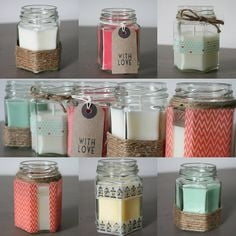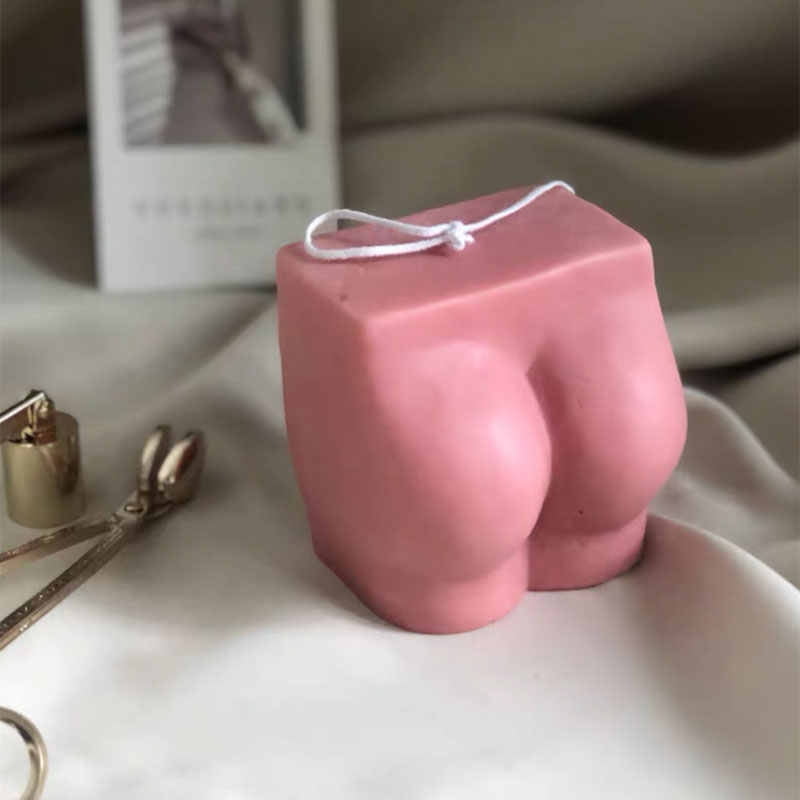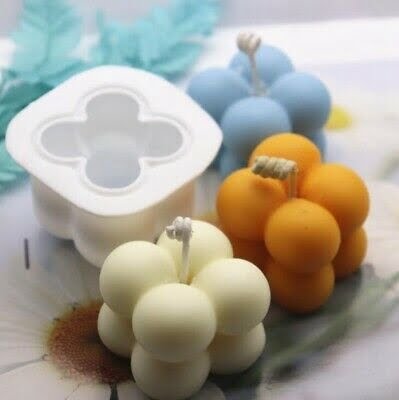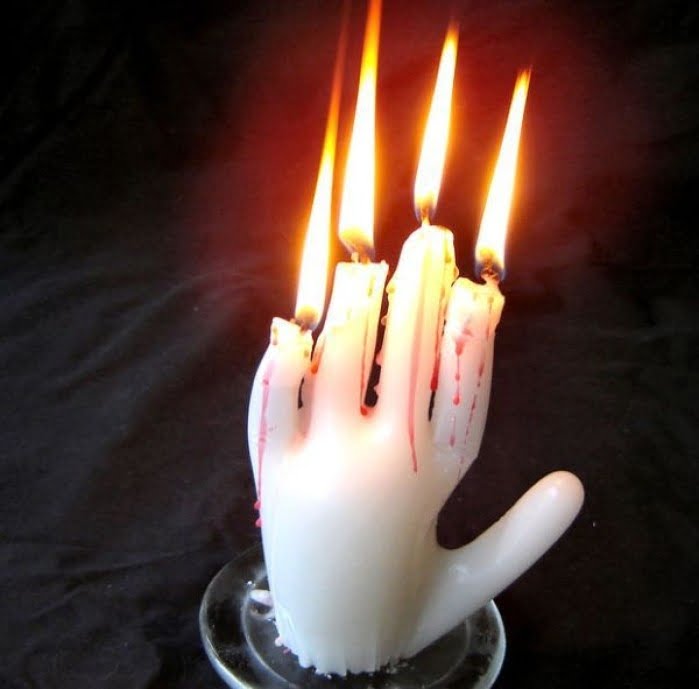Wooden wicks have become an increasingly popular choice among candle enthusiasts, bringing a touch of magic to the art of candle making. With their unique crackling sound and enhanced aesthetics, wooden wicks offer a delightful experience that sets them apart from traditional cotton wicks. In this blog post, we will dive deep into the world of wooden wicks, exploring why they are the best choice for candle makers and providing a comprehensive review of the top picks in the market.
As candle making continues to captivate individuals with its creative possibilities, it’s no wonder that wooden wicks have caught the attention of both beginners and seasoned enthusiasts alike. The allure lies in their ability to create a visually appealing ambiance while offering a longer and cleaner burn compared to cotton wicks. There’s something captivating about watching a flickering flame dance atop a wooden wick, accompanied by the soothing crackling sound reminiscent of a cozy fireplace.
The aim of this blog post is to serve as your ultimate guide to wooden wicks for candle making. We will explore the advantages of using wooden wicks over traditional cotton ones and delve into factors you should consider when choosing the perfect wooden wick for your specific project.
Additionally, we will provide expert insights from seasoned candle makers who have worked extensively with wooden wicks, as well as a step-by-step tutorial on how to create your own candles using these enchanting wicks.
So whether you’re an aspiring candle maker embarking on your first venture or an experienced artisan seeking new ideas and inspiration, join us on this journey as we uncover the magic of wooden wicks for candle making. Get ready to immerse yourself in the world of beautiful fragrances and mesmerizing flames that only these remarkable wicks can provide.
Advantages of Wooden Wicks over Traditional Cotton Wicks
Wooden wicks offer several advantages over traditional cotton wicks, making them an excellent choice for candle making enthusiasts. One of the standout benefits of wooden wicks is their enhanced aesthetics and visual appeal.
Unlike cotton wicks, which can often be plain and unremarkable, wooden wicks add a touch of sophistication and charm to candles. The natural wood grain and unique shape of wooden wicks create an eye-catching feature that adds to the overall beauty and elegance of the finished product.
In addition to their visual appeal, wooden wicks also produce a delightful crackling sound when lit. This crackling effect not only enhances the ambiance but also creates a cozy and relaxing atmosphere. The gentle sizzling noise evokes feelings of warmth and comfort, making wooden-wick candles perfect for creating a soothing environment during moments of relaxation or self-care.
Another advantage of wooden wicks is that they offer longer and cleaner burning compared to cotton wicks. Wooden wicks have a larger flame size, which results in more efficient burning. This means that wooden-wick candles tend to last longer than those using traditional cotton wicks. Additionally, the ample supply of oxygen provided by the wider flame prevents excessive soot buildup, resulting in cleaner burning and reduced maintenance.
| Advantage | Wooden Wicks | Cotton Wicks |
|---|---|---|
| Aesthetics | Adds visual appeal with natural wood grain | Plain appearance |
| Crackling Sound | Produces delightful sizzling noise | No special sound effects |
| Burn Time | Longer burning, more efficient flame | Shorter burning time |
| Clean Burning | Less soot buildup and reduced maintenance | Potential for soot buildup, requires more maintenance |
Factors to Consider When Choosing Wooden Wicks
Choosing the right wooden wicks for your candle making project is crucial to ensure a successful and satisfying outcome. There are several factors to consider when selecting wooden wicks, including the type of wick, size and thickness, and compatibility with the type of wax used.
Types of Wooden Wicks
The first factor to consider when choosing wooden wicks is the type of wick that best suits your needs. The market offers various types such as flat wooden wicks, layered wooden wicks, and even custom-shaped ones. Each type has its own unique characteristics and burning properties.
Flat wooden wicks are known for their wide flame and excellent performance in most containers. Layered wooden wicks provide a more controlled burn and can create different flame shapes. Custom-shaped wooden wicks offer endless possibilities for creativity in design.
Size and Thickness
Another important consideration is the appropriate size and thickness of the wooden wick for your candle containers. Choosing the wrong size or thickness can result in issues such as excessive smoking or poor burning performance. To determine the right size, consider the diameter and depth of your container. It’s generally recommended to select a slightly larger wick size for wider containers or higher fragrance load candles.
Compatibility with Wax Type
Lastly, it’s essential to ensure that the chosen wooden wick is compatible with the type of wax you are using for your candles. Different types of wax have different characteristics that can affect how a wooden wick performs. For example, soy wax tends to require larger or hotter-burning wicks compared to paraffin wax. It’s important to do some research on which types of wood work best with specific wax materials.
By considering these factors – type of wooden wick, size and thickness, and compatibility with wax – you can make an informed decision when selecting wooden wicks for your candle making project. Experimentation and testing may be necessary to find the perfect wooden wick that suits your specific needs and preferences.
In the next section, we will provide a comprehensive review and comparison of the best wooden wick options available on the market to help you make an informed choice.
Top Picks
When it comes to selecting the best wooden wicks for your candle making projects, there are a variety of options available on the market. To help you make an informed decision, we have curated a list of some of the top picks for wooden wicks that have received rave reviews from candle enthusiasts.
First on our list is the Flat Wooden Wick. This type of wick is known for its excellent burn performance and ability to produce a consistent flame. It is perfect for container candles and provides a slow, even burn. The Flat Wooden Wick also creates a delightful crackling sound that adds to the ambiance and charm of your candles.
Next up we have the Layered Wooden Wick. This unique design consists of multiple layers of thin wood, which allows for optimal fragrance release and improved burn efficiency. The Layered Wooden Wick ensures a steady flame that consumes less wax, resulting in longer burning times and cost savings.
For those looking for a sustainable option, consider the Ribbon Wooden Wick. Made from ethically-sourced wood, this wick not only burns cleanly but also contributes to environmental preservation. The Ribbon Wooden Wick has gained popularity among eco-conscious candle makers due to its exceptional performance and minimal carbon emissions.
It is important to note that when choosing wooden wicks, you should consider the size and thickness that is most suitable for your specific candle containers. A general rule of thumb is to select a wick width that matches or slightly exceeds the diameter of your container.
Additionally, different types of wax may require different types of wooden wicks. For example, soy wax tends to work well with flat or layered wooden wicks, while coconut wax may perform better with ribbon or teardrop-shaped wicks.
By considering these factors and exploring the unique qualities of each type of wooden wick, you can find the perfect option that meets your preferences and enhances your candle making journey.
Testing and Experimentation
Wooden wicks offer candle makers a unique and delightful experience, but with so many options available on the market, it can be challenging to find the perfect wooden wick for your specific candle making project. This section will provide valuable tips and tricks for conducting your own tests to identify the ideal wooden wick. By considering factors such as wax type, fragrance load, and container size, you can ensure that your candles burn beautifully and create the desired ambiance.
When testing different wooden wicks, it is essential to have a consistent testing process in place. Start by selecting a variety of wooden wicks that you are interested in trying out. It is recommended to use the same type of wax for each test to eliminate any variables that may impact the results. Additionally, make sure to test with different sizes and thicknesses of containers if you plan on using them for different candle projects.
One crucial factor to consider during testing is the fragrance load. Fragrance oils can vary in their performance and interaction with different wicks, so it is important to experiment with various scent strengths. This will help you determine how each wooden wick performs under different fragrance loads and how well they distribute the scent when burning.
After conducting your tests, carefully document your observations and compare the results of each wooden wick trial. Consider aspects such as burn time, flame height, melt pool formation, and overall performance. Take note of any issues or concerns encountered during testing so that you can address them effectively later on.
| Factors | Tips |
|---|---|
| Consistent Testing Process | Use the same type of wax for each test |
| Fragrance Load | Experiment with various scent strengths |
| Documentation | Record observations and compare results |
Remember, testing and experimentation play a crucial role in finding the perfect wooden wick for your candle. It may take several trials before you discover the ideal combination that suits your preferences and candle making projects. Stay patient and persistent, and soon enough, you will have the satisfaction of creating beautifully burning candles with the perfect wooden wicks.
Expert Advice
When it comes to creating the perfect wooden wick candle, there’s no better source of advice than experienced candle makers who have spent years honing their craft. These experts have worked extensively with wooden wicks and can provide valuable insights on their preferred brands, sizes, and techniques for optimal results.
One seasoned candle maker, Sarah Thompson, recommends using the Wood Wick brand for its reliability and consistent performance. She suggests using their medium-sized wicks for most standard-sized candle containers, but advises experimenting with larger or smaller wicks depending on the desired burn time and fragrance throw.
Another expert, Ethan Reynolds, emphasizes the importance of proper wick trimming. He explains that trimming a wooden wick correctly is crucial for achieving a clean burn and preventing excessive smoking. He suggests trimming the wick to a height of about 1/4 inch before each use to promote an even flame and minimize soot.
When asked about troubleshooting common issues encountered when using wooden wicks, Cathy Lee shares her knowledge gained from years of experience. She advises that if your candle has trouble staying lit or has a weak flame, it may be due to using a wick that is too small for the container size or wax type. In this case, she suggests trying a wider or thicker wooden wick.
These insights from seasoned candle makers can greatly enhance your understanding of working with wooden wicks and help you avoid common pitfalls. Their knowledge and expertise are invaluable resources as you venture into the world of candle making with wooden wicks.
Whether you’re just starting out or looking to refine your skills, learning from those who have already mastered the art can save you time and frustration. Incorporating their advice into your own candle making process is sure to lead to beautiful creations with delightful crackling sounds and long-lasting burns.
DIY Wooden Wick Candle Making Tutorial
Step 1: Selecting the Appropriate Wooden Wick, Wax, and Fragrance Combination
Before starting your DIY wooden wick candle making project, it is important to select the right wooden wick, wax, and fragrance combination for optimal results. When choosing a wooden wick, consider factors such as the size of your candle container and the type of wax you will be using.
Different types of wooden wicks may require different sizes based on the width of your container. Consider consulting with experienced candle makers or referring to online resources for guidance on which size to choose.
In addition to the wooden wick, selecting the right wax is crucial for a successful candle-making process. The type of wax you choose will determine important factors such as burn time, scent throw, and overall performance. Some popular choices include soy wax, beeswax, and coconut wax. Each type has its own unique characteristics that can affect both the quality and aesthetics of your finished candle.
Lastly, selecting the appropriate fragrance is another important aspect of creating a pleasing aromatic experience with your wooden wick candles. Consider experimenting with different scents to find the perfect combination that suits your personal preference or matches a specific theme or mood you want to set.
Step 2: Tips for Achieving the Perfect Burn and Maximizing the Crackling Effect
To ensure a perfect burn with your wooden wick candles and maximize the delightful crackling effect unique to these types of wicks, there are a few tips to keep in mind:
– Trim the Wick: Before lighting your wooden wick candle, make sure to trim it to about 1/4 inch in length. This will help prevent excessive smoking and flaring while ensuring an even burn throughout.
– Container Selection: Choosing an appropriate container for your wooden wick candle is essential for optimal performance. Consider using containers made from materials that are heat-resistant and non-flammable. Glass jars are a popular choice as they showcase the beautiful flame and allow for an unobstructed view of the wooden wick.
– Wick Placement: When placing your wooden wick in the container, ensure that it stands straight and centered. This will help promote an even burn and prevent tunneling.
– Allow for Proper Curing: After pouring your wax into the container and inserting the wooden wick, it is recommended to let the candle cure for at least 24 hours before lighting. This allows the wax to fully set and ensures a consistent burn throughout.
Step 3: Enjoying Your Homemade Wooden Wick Candle
Once your wooden wick candle has cured and you have followed all the necessary steps, it’s time to light up your creation and enjoy its warm glow, crackling sound, and delightful fragrance. Remember to always keep safety precautions in mind when burning candles, such as never leaving them unattended or placing them near flammable objects.
As you enjoy your homemade wooden wick candle, take note of its performance and any areas where improvement may be needed. Each candle-making project presents an opportunity to learn and refine your technique further. By documenting your process and comparing results over time, you can continue to enhance your skills and create truly exceptional wooden wick candles that reflect your unique style and preferences.
The Future of Wooden Wicks
In recent years, wooden wicks have taken the candle making industry by storm, captivating the hearts of candle enthusiasts everywhere. Not only do they offer a unique and aesthetic appeal, but they also provide a delightful crackling sound that enhances the ambiance of any space. As the demand for wooden wick candles continues to grow, it is worth exploring the potential future advancements and innovations in wooden wick technology.
One area of innovation that holds great promise is the development of eco-friendly and sustainable wooden wicks. With increasing concerns about environmental impact and sustainability, many candle makers are seeking alternatives to traditional cotton wicks. Wooden wicks made from renewable resources like bamboo or salvaged wood could be a game-changer in the industry. These wicks not only offer a more natural and earth-friendly option but also align with consumers’ growing desire for eco-conscious products.
Another exciting trend on the horizon is the integration of wooden wick technology with smart home devices. Imagine being able to control your wooden wick candles through your smartphone or voice commands. This innovation would not only add convenience but also allow users to customize their candle experience. Adjusting the crackling sound volume, changing flame height, or scheduling candle lighting could all become possible with these smart features.
Furthermore, advancements in shaping and molding techniques may result in uniquely designed wooden wicks that add an extra touch of elegance and creativity to candles. The possibility of intricate patterns or decorative shapes within the wood opens up endless opportunities for innovative designs in candle making. These distinctive features could make each candle even more special and appealing to consumers.
As the popularity of wooden wick candles continues to rise, so will the experimentation with different types of wood materials. Currently, most wooden wicks are made from cedarwood or birchwood due to their excellent burning characteristics. However, there may be other types of woods yet undiscovered that offer even better burning performance and aesthetics. Continued research into different wood species and their properties could lead to breakthroughs in wooden wick technology.
Conclusion
In conclusion, wooden wicks offer numerous advantages and unique qualities that make them the perfect choice for candle making enthusiasts. Their enhanced aesthetics and visual appeal, along with the delightful crackling sound they produce, can truly enhance the ambiance of any space. Additionally, wooden wicks burn longer and cleaner compared to traditional cotton wicks, providing a superior experience for both the candle maker and the consumer.
When choosing wooden wicks for your candle making projects, it’s important to consider several factors. Different types of wooden wicks are available in the market, such as flat or layered wicks, allowing for customization based on personal preferences and container sizes.
The type of wax used should also be taken into account when selecting the appropriate size and thickness of a wooden wick. Considering all these factors will help you find the perfect wooden wick that suits your specific needs.
To identify the ideal wooden wick for your candles, conducting tests and experiments is crucial. Factors such as wax type, fragrance load, and container size should be taken into consideration during these tests. By documenting and comparing the results of different wooden wick options, you can determine which one provides optimal performance in terms of burn time and crackling sound.
Seeking advice from seasoned candle makers who have extensive experience with wooden wicks can provide valuable insights and guidance. Learning from their preferred brands, sizes, and techniques will help you achieve optimal results in your own candle making journey. They can also offer tips on troubleshooting common issues encountered when using wooden wicks and how to effectively address them.
In conclusion, finding the perfect wooden wick is an exciting part of the candle making journey. With their unique qualities including enhanced aesthetics, a delightful crackling sound, longer burning times, and cleanliness compared to cotton wicks – wooden wicks truly offer something magical for any candle enthusiast.
Whether you’re just starting out or have years of experience in candle making industry experimenting with different styles, sizes, and techniques can help you find the best wooden wicks for your individual preferences and candle making projects.

Welcome to my candle making blog! In this blog, I will be sharing my tips and tricks for making candles. I will also be sharing some of my favorite recipes.





